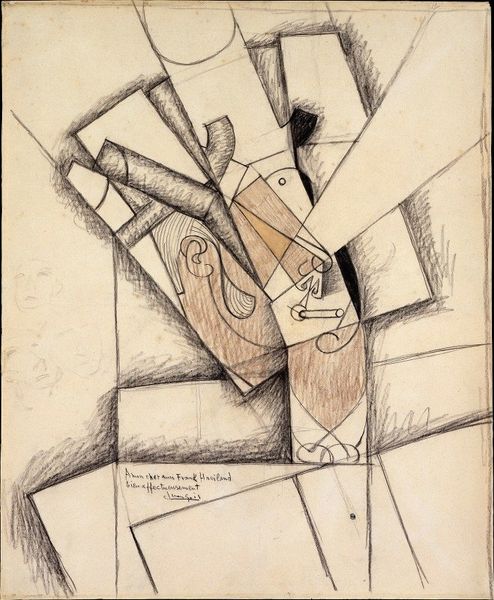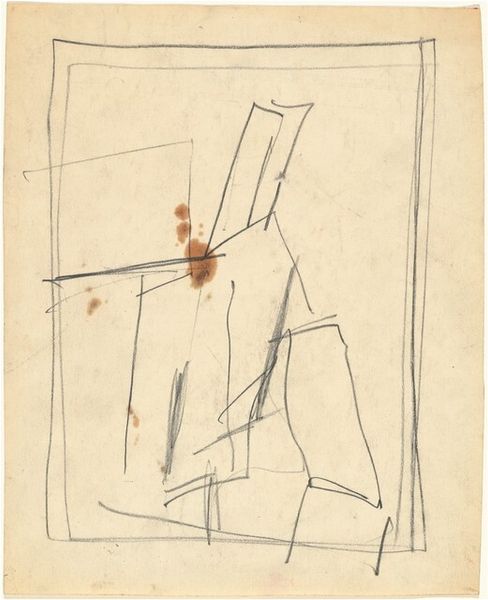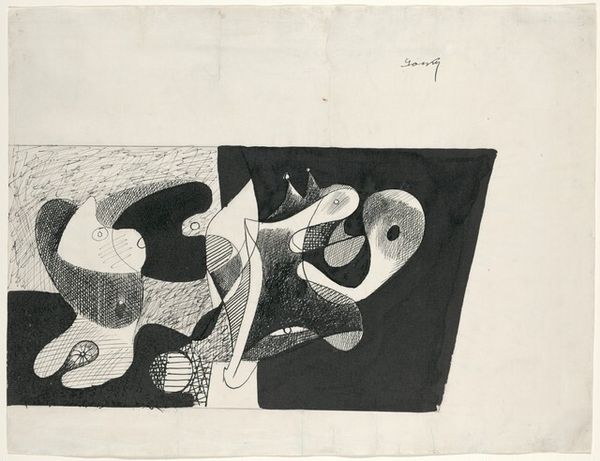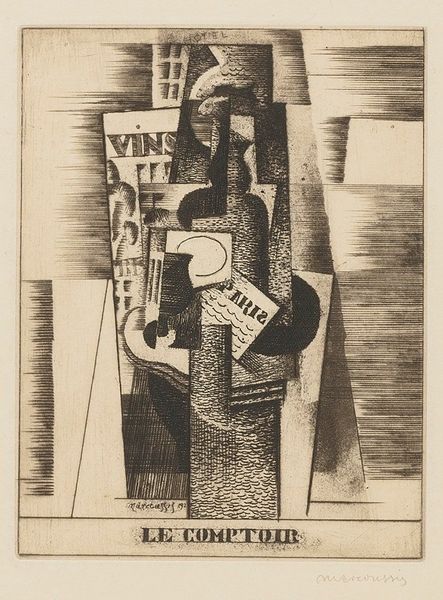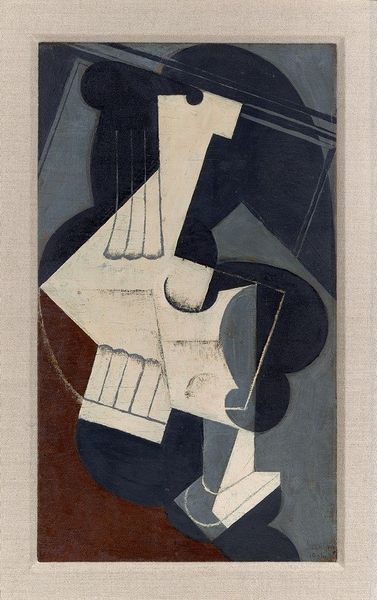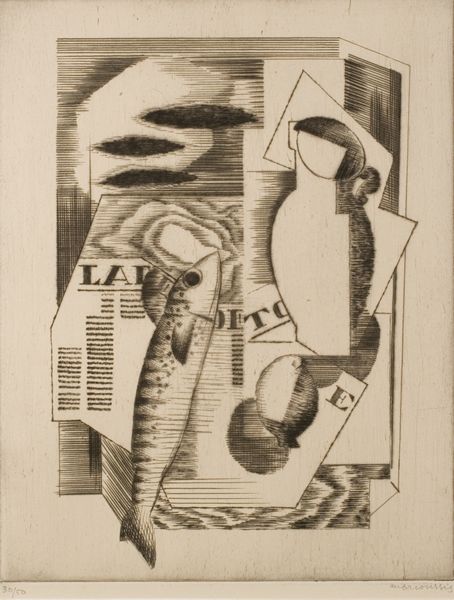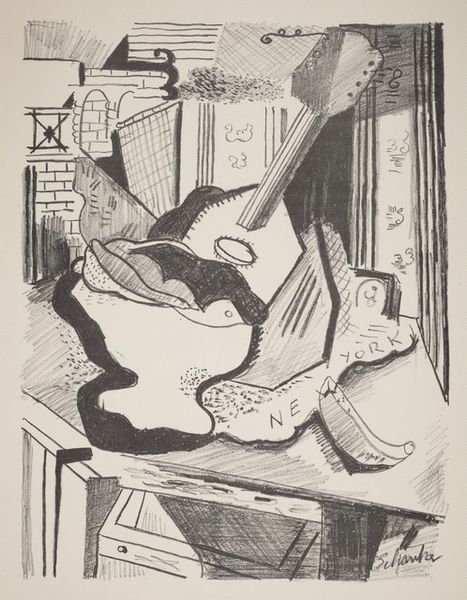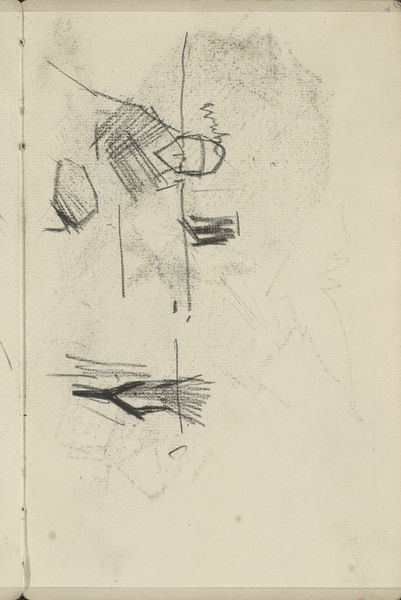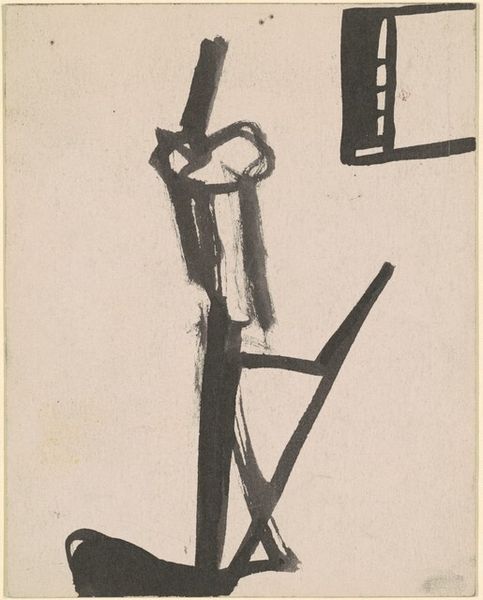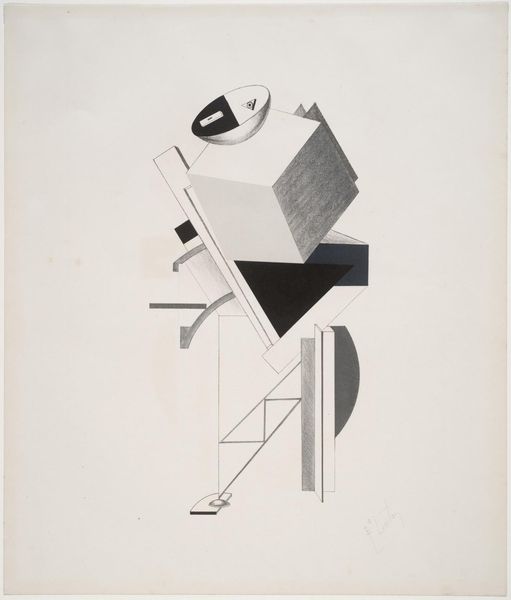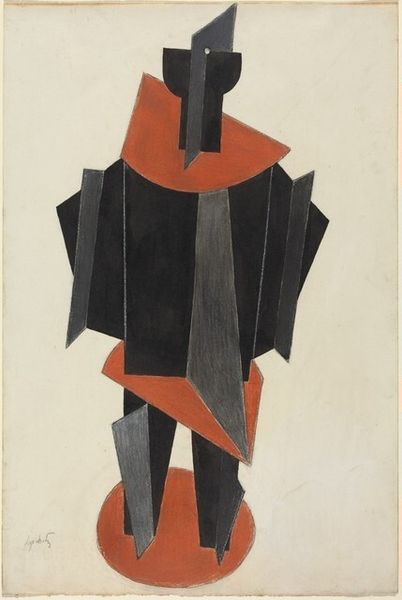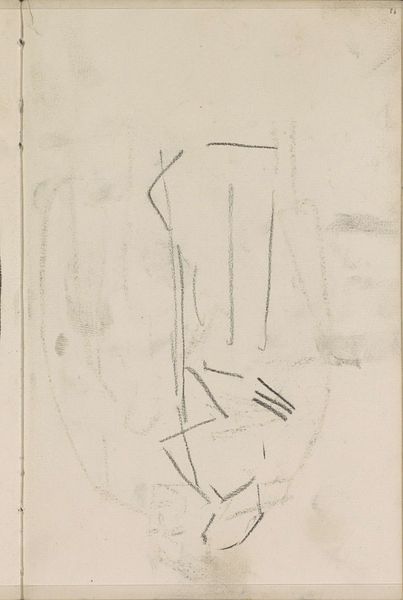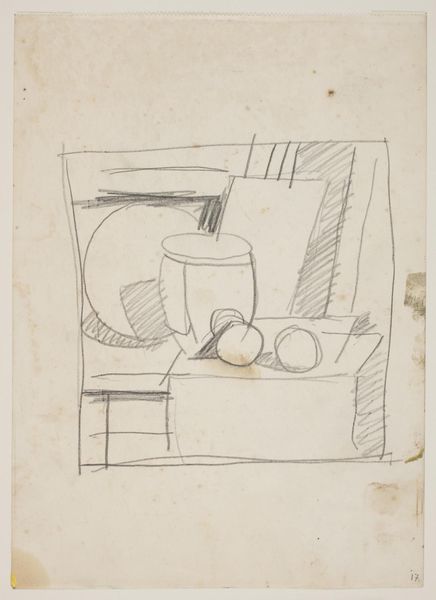
drawing
#
drawing
#
cubism
#
geometric
Dimensions: Overall (approximate): 62.1 x 46.9 cm (24 7/16 x 18 7/16 in.) support: 45.2 x 50.4 cm (17 13/16 x 19 13/16 in.)
Copyright: National Gallery of Art: CC0 1.0
Curator: Well, here we have Georges Braque's "Aria de Bach" from 1913. It’s primarily a drawing, but incorporates some collage elements too. Editor: My first impression is one of fractured elegance. It’s subdued in color yet there’s a clear structural rigor— almost like a blueprint for a musical experience. The shapes overlap in unexpected ways. Curator: Precisely. Braque's Cubism here breaks down the conventional still life. Notice the fragmented guitar, the sheet music… Editor: And that intriguing interplay of materials. You've got paper, but then that striking wooden rectangle. What statements were Braque trying to make with that materiality? Curator: It’s important to consider the means of production at that time. He is, in a way, challenging the high art/craft dichotomy, using industrial and 'lower' materials to depict classical themes. The music sheet grounds us in a shared culture. How does this play in public reception and the art world? Editor: Museums played a significant role in validating works like this. Remember, Cubism was initially rejected. Seeing a collage using cheap, easily accessible items beside traditional paintings must have challenged existing standards. But this became a powerful force! Curator: The presence of printed musical scores— readily consumed by the public – highlights the impact on everyday culture. We can consider that his technique parallels industrial processes; that each added piece is both independent yet forms the whole, mechanically bringing them together, like chords or notes, thus allowing the viewer to participate in actively constructing their own sense of a familiar melody within fragmented materials. Editor: Yes! This approach to both making and displaying artwork reframed societal perception. And it also redefined painting conventions. Braque forced audiences to negotiate their understanding. Curator: So, what resonates most for you when viewing "Aria de Bach" within today’s climate? Editor: It's about recognizing the evolution. It showed how much art changed public expectations regarding visual representation and it opened possibilities by pushing those expectations. I now look at Braque's use of quotidian matter to tell universal stories – fascinating to me still! Curator: I agree. Delving into how these techniques altered not only art-making but the wider manufacturing and cultural sectors… it underscores this piece's complex story.
Comments
No comments
Be the first to comment and join the conversation on the ultimate creative platform.
